This article was medically reviewed by Shari Forschen, NP, MA. Shari Forschen is a Registered Nurse at Sanford Health in North Dakota. Shari has worked in healthcare since 1996 and her expertise lies in acute care bedside nursing on a medical oncology floor. She received her degree from Medcenter one College of Nursing in 2003 and her Family Nurse Practitioner Masters from the University of North Dakota in 2014. Shari is a member of the American Nurses Association.
There are 16 references cited in this article, which can be found at the bottom of the page.
This article has been viewed 9,967 times.
Melanoma is a serious form of skin cancer that can spread (metastasize) to other parts of your body. Melanoma begins in a type of skin cell known as a melanocyte which is the cell that contains melanin, the skin pigment that gives skin darker or lighter shades.[1] Learn how to perform skin checks so you can monitor your body for melanomas.
Steps
Performing a Melanoma Skin Check
-
1Undress completely. The first step to doing a melanoma skin check is to undress completely. Make sure you are in a well-lit area. Stand in front of a full-length mirror.[2]
- Have a hand-mirror nearby to help you check your back and other difficult to see areas.
- You may want to ask a spouse, family member, or friend help you check those hard-to-see areas, as well as to check your neck and scalp.
-
2Check the front of your upper body. Face the mirror and check everything you can see. Check your face, ears, neck, chest, and belly. Remember to note all your moles and note any abnormalities.[3]
- Women should lift their breasts to check the skin underneath.
Advertisement -
3Look over your arms. After checking your upper body, move on to your arms. Check your underarms, both sides of both arms, the tops and the palms of your hands, between your fingers, and your fingernails.[4]
-
4Check your legs. Sit down somewhere comfortable. Check the fronts of your thighs, shins, tops of your feet, in between your toes, and your toenails.[5]
- Using the hand mirror, check the bottoms of each foot, each calf, and the backs of each of your thighs.
-
5Use the hand mirror to check hard-to-reach areas. To check your hard-to-reach areas, you can either stand or sit, whichever is more comfortable. Use the hand mirror to check your buttocks, genital area, lower and upper back, and the back of the neck and ears.[6]
- It may be easier to look at your back in the full-length mirror by using a hand mirror — or asking your spouse, friend or family member to check.
-
6Check your scalp with a comb. You should also check your scalp for melanomas. Use a comb to part your hair and check your scalp. At this time, a spouse, friend, or family member may be needed to check the back of your head and neck.
-
7Repeat every month. If you are in one of the groups at risk, you need to check yourself regularly. You can do this once a month to keep track of your moles and notice any developing irregularities.[7]
- For those who are not at high risk, you can check yourself every three, six, or even 12 months, depending on other risk factors like exposure to the sun or amount of moles.
Identifying the Signs of Melanomas
-
1Monitor for changes using the ABCDE rule. Melanomas can be identified by checking the moles on your body. This includes a change in the way your skin looks or feels around a mole. You can use the ABCDE rule as a guide to check for changes. If you have any of these warning signs, let your physician know.[8]
- Asymmetry: One half of the mole looks or feels different than the other half.
- Border: Normal moles have regular, relatively smooth borders. Melanomas tend to have irregular, notched, ragged, blurry, or uneven borders.
- Color: If the color of the area of skin is uneven, like if it contains various shades of brown, black, or other colors, it may be a sign of skin cancer.
- Diameter: Any spot of different-looking skin larger than ¼ inch should be checked.
- Evolving or changing spot: The changes in the area can be in size, shape, color or texture, like. bumpy versus smooth.
-
2Keep a log of your moles as you check yourself and use the ABCDE rule to help monitor changes. Write down the date of your mole check and make detailed notes about your moles— include the specific location, size, color, shape and anything else you observed during your check. You can print out a picture of a human body and mark the areas where you have moles, too. There are even apps that help you monitor you moles, allowing you to upload photos and mark their location on a 3D model.
-
3Check for other warning signs. Though checking the moles on your body are the best ways to find symptoms, there are other warning signs you can look for. Additional warning signs include:[9]
- A sore that does not heal
- Spreading of pigment from the border of the spot into the surrounding skin
- Redness or swelling extending beyond the border of the spot
- Any change in sensation, such as increased itchiness, tenderness, or pain
- Any change in the surface of a mole, like scaliness, oozing, bleeding, or the appearance of a bump or nodule
- A new mole
Recognizing Risk Factors For Melanoma
-
1Check your body if you’ve had UV exposure. The major risk factor for melanomas is exposure to Ultraviolet (UV) light. This exposure can be from the sun, tanning beds, or tanning lights.[10]
-
2Look for moles on the body. The presence of moles on the skin is another risk factor. Most people have moles. They are pigmented and often slightly raised areas of the skin that are non-spreading tumors. Someone who has more than 50 moles is at a higher risk for melanoma.[11]
- If you have moles, make a habit of keeping an eye on them. Normal moles are usually evenly colored and can be flat or raised above the skin a bit. Moles are usually round or oval and smaller than about ¼ inch.
- Some people have a condition called dysplastic nevi, which are atypical moles. They look different than a normal mole. Usually, they're larger, and sometimes they differ in color, texture, or shape than a normal mole. These atypical moles increase your chance of getting skin cancer, and sometimes melanoma can happen inside the dyplastic nevus.
-
3Be aware that fair skin can lead to melanoma. Another risk factor for melanoma is skin color. People who have fair skin, light hair, and freckles are at a greater risk for melanoma.[12]
- It is thought that since these are people who also are at higher risk for sunburn, UV radiation from the sun plays an important role in the development of melanomas.
- However, even those with darker skin can have melanoma on the lighter areas of their bodies. These areas include the soles of the feet, the palms of the hands, and under the nails.
-
4Check yourself if you have a history of sunburn. Since UV exposure can lead to melanoma, a history of sunburns is a risk factor for skin cancer. You are also at risk if you sunburn easily. If you have had multiple sunburns, check yourself regularly.[13]
- If your sunburns were severe, you are at a higher risk. Severe sunburns include peeling, blistering, or other adverse side effects.
-
5Be aware of other risk factors. There are other risk factors for melanoma. If you have a family or personal history of melanoma, you may be at risk. People who are older are at a greater risk, as are people who have weakened or suppressed immune systems.
Understanding the Importance of Melanoma Skin Checks
-
1Check yourself often if you are at high risk. Individuals at high risk for melanoma should check themselves monthly for melanomas. Those who should be especially careful and perform a melanoma skin check every month are:[16]
- Those with a family or personal history of melanoma
- Those who have fair hair, light skin, or many freckles
- Individuals who have more than a few scattered moles
-
2Check your body even if you are a low risk candidate. Everyone should check their skin for melanomas. It is a good idea to keep an eye on any moles to see if they change shape, color, size, or texture. Even if you are not at risk for melanoma, check your skin once every three to twelve months using the melanoma skin check process.[17]
- If you are a low risk candidate, decide if you want to check yourself every three, six, or 12 months. If you have had more exposure to the sun and UV rays, or you have a lot of moles, you may want to check yourself more often than if you don't.[18]
- If you are unsure about how often you should check yourself, contact your doctor.
- Almost every skin cancer caught early can be treated and cured. The chances of cure decrease with later detection.
-
3Learn where melanomas occur. Melanomas often occur on the chest and the back in men. In women, they usually occur on the legs. Melanomas can often be found on the face and neck in both sexes.[19]
- Much less commonly, melanomas can develop on the eyes, the mouth, the genitals, and around the anus.
References
- ↑ https://www.cancer.org/cancer/melanoma-skin-cancer/about/what-is-melanoma.html
- ↑ http://www.cancer.org/cancer/cancercauses/sunanduvexposure/skincancerpreventionandearlydetection/skin-cancer-prevention-and-early-detection-skin-exams
- ↑ https://www.cancer.net/cancer-types/melanoma/screening
- ↑ https://www.aad.org/public/diseases/skin-cancer/find/check-skin
- ↑ http://www.cancer.org/cancer/cancercauses/sunanduvexposure/skincancerpreventionandearlydetection/skin-cancer-prevention-and-early-detection-skin-exams
- ↑ http://www.cancer.org/cancer/cancercauses/sunanduvexposure/skincancerpreventionandearlydetection/skin-cancer-prevention-and-early-detection-skin-exams
- ↑ https://www.cancer.gov/types/skin/moles-fact-sheet#q12
- ↑ https://www.aad.org/public/diseases/skin-cancer/find/at-risk/abcdes
- ↑ https://www.skincancer.org/early-detection/self-exams/
- ↑ http://www.cancer.org/cancer/skincancer-melanoma/detailedguide/melanoma-skin-cancer-risk-factors
- ↑ https://www.cancer.gov/types/skin/moles-fact-sheet
- ↑ https://www.cancer.gov/types/skin/patient/skin-prevention-pdq#section/all
- ↑ https://medlineplus.gov/lab-tests/skin-cancer-screening/
- ↑ https://my.clevelandclinic.org/health/diseases/14391-melanoma
- ↑ https://www.ncbi.nlm.nih.gov/pmc/articles/PMC5770156/
- ↑ https://www.cancer.gov/types/skin/patient/skin-prevention-pdq#section/all
- ↑ http://www.skincancer.org/skin-cancer-information/melanoma/melanoma-warning-signs-and-images/do-you-know-your-abcdes
- ↑ http://www.cancer.gov/types/skin/moles-fact-sheet#q12
- ↑ source: https://www.cancer.gov/types/skin/moles-fact-sheet#q12

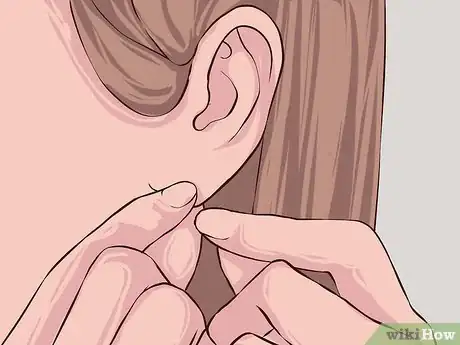

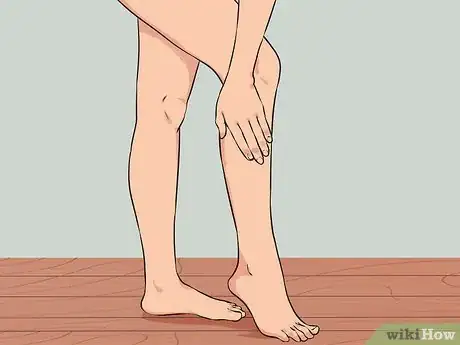




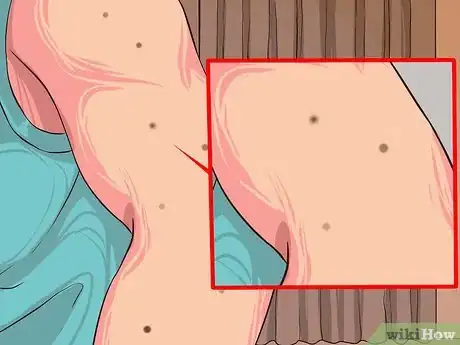
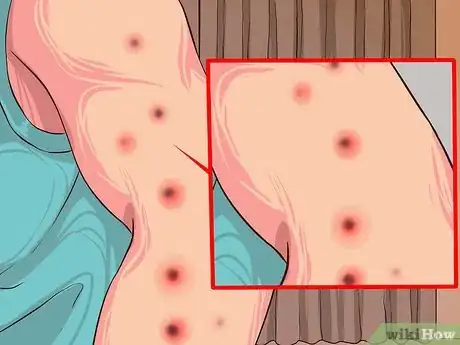

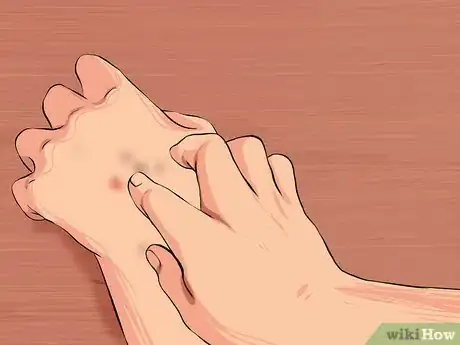
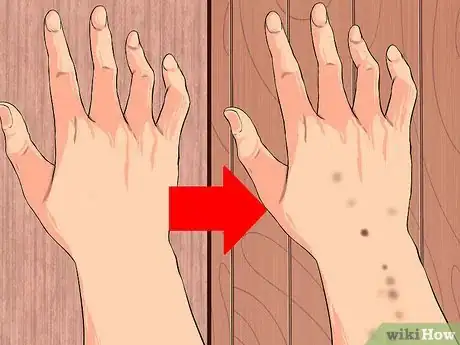










-Step-13.webp)


-Step-8-Version-3.webp)



















































Medical Disclaimer
The content of this article is not intended to be a substitute for professional medical advice, examination, diagnosis, or treatment. You should always contact your doctor or other qualified healthcare professional before starting, changing, or stopping any kind of health treatment.
Read More...